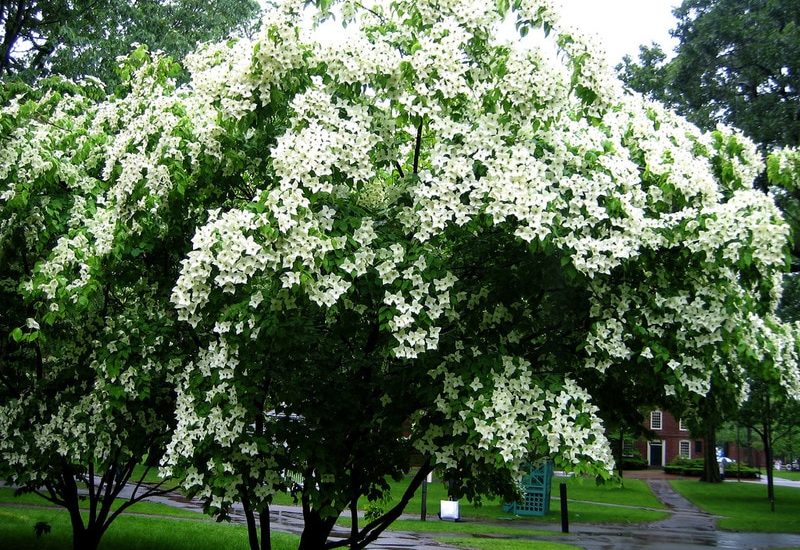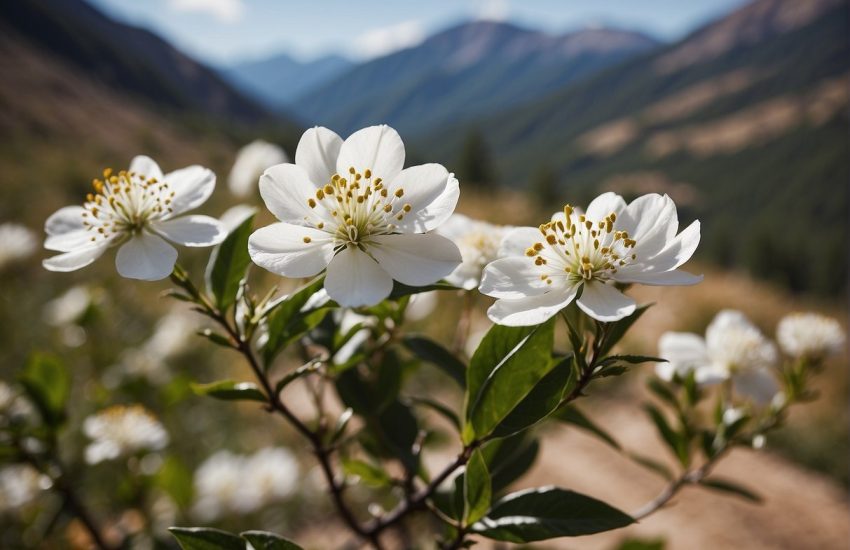6 Best Flowering Trees To Grow In North, South, East & West Texas
Longer days of sunshine are welcoming us outdoors, and the prettiest trees in Texas are showing off their true colors, letting us know that spring is going to arrive soon. This is the trees you need to keep an eye on when warmer weather rolls around, regardless of whether or not you are looking for the perfect spot for a photo or a beautiful backdrop on which to set a picnic.
There is a hint of spring in the air, and many homeowners have begun working in their gardens and lawns in preparation for summer. While spring is a great time to renew mulch and fertilize your trees, many people are also looking to freshen up their outdoor areas by planting new decorative shrubs and trees.
The choice of a decorative or ornamental tree for your yard can seem overwhelming; there are a variety of varieties in our area. It is important, however, to carefully choose your tree species according to the climate and soil in your area, and to bring a bit of knowledge with you when you visit the nursery.
Bluebird Rose of Sharon Hibiscus Shrub
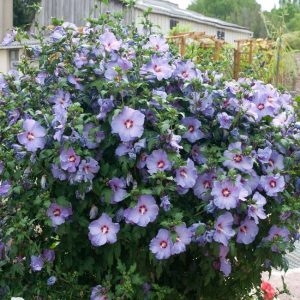
Featuring large, beautiful blue flowers that contrast with a purple center and a red rim, the Bluebird Rose of Sharon Althea Shrub makes a powerful statement in any setting.
Moreover, it’s versatile and looks great near entryways, patios, and even in corners.
All soil types, including clay, are suitable for growing the Bluebird. However, it is drought tolerant despite preferring moderate moisture.
A deer-resistant rose of Sharon Althea is the best choice if you don’t like deer nibbling at your garden.
This shrub is strong enough to handle anything.
Sargent Crabapple Tree
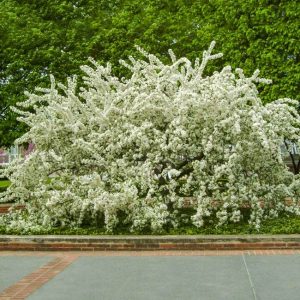
You can enjoy this compact, easy-to-maintain crabapple year round, with snowy white flowers in spring and yellow foliage and bright red fruit in fall.
What is your space like? Nothing to worry about. Its compact size makes it perfect for small yards and landscapes, sloped areas, and under utility lines. For privacy or hedging, along fence lines, patios, or sidewalks, you can use mixed borders. When mature, the Sargent Crabapple grows to 6-10 feet tall and 6-12 feet wide, often close to its height.
From spring to winter, a variety of seasonal colors. Your landscape will be full of color almost all year round thanks to the Sargent crabapple. A reddish spring blossom eventually develops into a white blossom in the fall, while the dense foliage turns yellow. Throughout the winter, the plant produces clusters of small, red fruit. Every other year, heavy blossoms appear on the Sargent Crabapple.
Low maintenance, easy to care for. The Sargent Crabapple thrives in a variety of climates and soil types, and is ideal for zones 4-8. It’s easy to transplant and grow, and can even tolerate some dry conditions once it’s established. Plus, the Sargent Crabapple is largely disease-resistant.
Have you ever enjoyed watching wildlife? Birds and butterflies, including robins, mockingbirds, and hummingbirds, are attracted to the Sargent Crabapple’s fragrant flowers and bright red fruit.
Bonsai are excellent with this tree. Suitable for Bonsai gardening, because its foliage is dense and the branches are spread out.
Apple trees appreciate its companionship. Pollination of apple trees can be achieved using the Sargent crabapple.
Royalty Crabapple
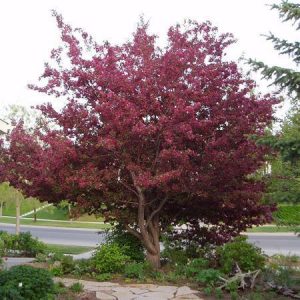
Crabapples of all colors are spectacular all year round. The garden will be filled with brilliant purples in every single season if you have this tree. You should plant several along the driveway for your guests to feel like royalty. Your landscape will feel like a kingdom with brilliant violent hues.
As spring approaches, Royalty Crabapples display rich purple foliage. Throughout the year, the tree blooms a plethora of beautiful dark red flowers. In the summer, the leaves develop a green underside, but never lose their rich purple color. In the fall, the leaves turn to scarlet, but sweet little purple-red berries adorn the branches. You’ll never tire of the variety of rich colors in your landscape. From plum purple to mahogany and violet, your yard will flourish with royal colors.
Throughout the winter, the small, sweet berries persist. Thus, as winter approaches and the landscape becomes barren, your Royalty Crabapple stands out and adds visual interest. Your landscape will benefit from the stark contrast of white snow against the purple and red colors that this tree brings to early winter.
You can enhance your yard’s entire atmosphere through lighting. In addition to their visual appeal, mahogany flowers are extremely fragrant. A sweet, light scent emanates from the flowers of the Royalty Crabapple. Imagine how beautiful and scented your landscape will be when this tree is added.
Over 800 varieties of crabapples exist, but there are some that are more finicky than others. Royalty Crabapples are among the easiest plants to maintain. It only grows to 15′ and its uniform, compact habit makes this tree very manageable. You won’t need to worry about excessive pruning or fuss with this tree.
Tuscarora Crape Myrtle
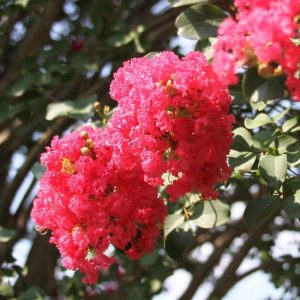
Tuscarora Crape Myrtle blooms in coral pink about the time it bursts into bloom and is drought-tolerant. It also comes with disease tolerance, so it’s a simple plant to care for on a large scale in California.
Even better is the visual interest it offers month after month. Summer foliage becomes orange-red in the fall after turning bright green during the summer. Even in cold winter months, the cinnamon bark’s smooth surface makes it a attractive addition.
Were you aware that this plant can withstand temperatures below zero? Unlike most Crape Myrtles, the Tuscarora can be grown in arid conditions as well as in frigid temperatures.
Vanilla Strawberry Hydrangea Shrub
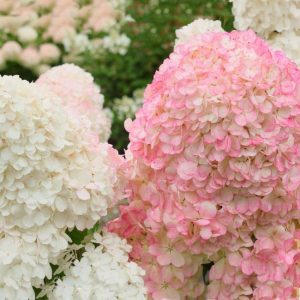
They are truly the flowers they are named after. This deliciously named Vanilla Strawberry Hydrangea produces beautiful blooms in white, pink and deep red. Like a strawberry shortcake, these flowers are irresistible. You (and your neighbors) will stare at the gorgeous blooms that appear year after year!
In the beginning, the blooms are creamy white, then turn pink, and finally turn a deep red and burgundy as they mature. During spring and summer, you will see all three hues at the same time, since the flowers bloom at the same time.
A parchment-like color appears on the blooms as the days cool in the cooler months. A bright red stem can sometimes be observed on the stems, creating a unique contrast.
Vanilla Strawberry TM Hydrangeas are loved by pollinators for their bright colors. Butterfly, hummingbird, and beneficial bee habitats can be achieved with this plant. Spring and summer are wonderful times to look at all the brightly colored blooms and watch the pollinators buzzing about.
Vanilla Strawberry Hydrangeas aren’t finicky, so you don’t have to worry about annoying maintenance. This is one of the hardesty varieties of hydrangea. There’s no need to prune, no fertilize, and no guesswork needed for this plant – it simply wants to soak up the sun.
Crimson Pointe Purple Leaf Plum Tree
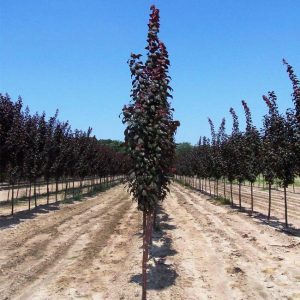
Crimson Pointe Purple Leaf Plum Trees provide vibrant color to any landscape, thanks to their unique, narrow silhouette.
In fact, its polished columnar shape makes it a perfect specimen for small gardens, roadways, and sidewalks.
As spring approaches, a first flush of white blooms heralds the arrival of exquisite foliage.
You get growth that thrives down to an astonishing -20 degrees, as well as unparalleled beauty.
Its eye-catching good looks meld perfectly with its strong stamina and longevity, making it the ideal tree for long-term enjoyment.

